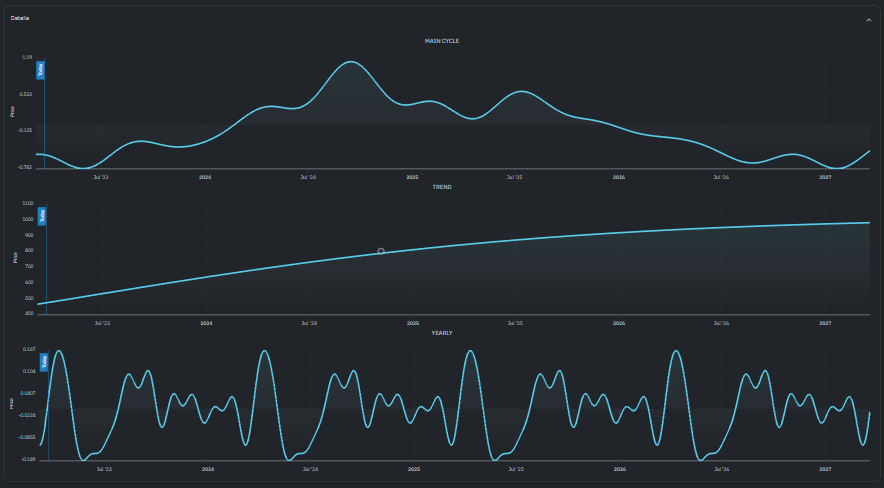Assessing the accuracy and performance of AI stock predicting and analyzing trading platforms is critical to ensure that you're using an AI tool that will provide solid insights and accurate predictions. These are the top ten ways to evaluate these platforms effectively:
1. Backtesting Results
What to Look For Find out if the platform offers backtesting capabilities to evaluate how its predictions would have performed on historical data.
What is the importance of backtesting: It allows you to verify the reliability of an AI model. This can be done by comparing predicted outcomes with actual results from the past.
Search for platforms that allow you to customize backtesting parameters.
2. Real-time Performance Tracking
What to look for Check how the platform performs under market conditions that are in real-time.
What's important : The performance of a platform in real time is much better than historical backtesting.
TIP: Watch real-time forecasts and then compare them to market developments with a demo or trial for free.
3. Prediction Error Metrics
What to look for: To quantify the accuracy of your predictions, look at metrics like mean absolute error (MAE), root mean squared error (RMSE) as well as R-squared.
Why is it important: These measures are a way to measure how closely the predictions correspond to actual results.
Platforms that allow sharing of metrics are usually more transparent.
4. Win Rate and Success ratio
What to look for: Look at the winning rate of the platform that is the percent of predictions that are accurate. Also, look at its success ratio (the profit of trading on the basis of the predicted outcomes).
Why It Matters : A high success ratio and win percentage indicate better predictive accuracy, and therefore potential profitability.
You should be wary of websites that boast of having a very high win rate (e.g. 90%) %+),) as there is no way to guarantee 100 100% success.
5. Benchmarking Market Indices
What to look for What to look for: Compare the platform's forecasts and results to major market indices such as S&P 500 or NASDAQ.
Why it is Important It helps to determine whether the platform outperforms or falls short of the market overall.
TIP: Don't only focus on short-term gains, but also an overall performance that is consistent over a longer period.
6. Consistency across Market Conditions
What to look for Check how the platform performs under different markets (bull markets or bear markets, high volatility).
Why it matters A solid platform must perform well across various markets, not only in favorable conditions.
Tip: Try the platform during times of volatility or when the market is in a downturn.
7. Transparency in Methodology
What to look for How to recognize AI algorithms and models (e.g. neural nets, reinforcement learning).
What is important Transparency allows you to evaluate the validity and reliability of scientific research.
Avoid platforms using "black box models" that don't explain how they generate predictions.
8. User Reviews and Independent Testing
What to look for What to Look For: Read reviews from users and search for independent testing or third-party evaluations of the system.
Why It Matters: Independent reviews and testing provide unbiased insights into the reliability and effectiveness of the platform.
Check user reviews in forums like Reddit copyright and financial blogs.
9. Risk-Adjusted Returns
What to look out for Utilize risk-adjusted indicators like the Sharpe Ratio (or Sortino Ratio), to evaluate the platform's performance.
Why It Matters The metrics are based on the amount of risk is taken to produce returns. This gives an overall image of performance.
Sharpe ratios (e.g. higher than 1) indicate higher risk-adjusted return.
10. Long-term Track Record
What to Look For Take a look at the performance of the platform over a long period (e.g. over three or five years).
What's the point. Long-term performance is a better indicator for reliability than short term results.
Do not use platforms that show only the results of a short-term study or a cherry-picked achievement.
Bonus tip: Try a demo account
Try out the platform with a free demo account to test how precise it is in real-time. You can evaluate the accuracy and performance of the system firsthand.
Use these guidelines to assess the accuracy, efficiency and the reliability of AI stock prediction and analysis platforms. It is then possible to select a platform that best aligns with your goals for trading, and your level of risk. Be aware that no platform can be trusted, and using AI insights with your own research is usually the best option. Follow the recommended ai chart analysis tips for blog info including ai investment stock, ai stock predictions, best ai stock, best stock analysis website, ai for trading, free ai investing app, best ai for stock trading, ai stocks, stock analysis app, best ai stocks and more.

Top 10 Tips On Assessing The Scalability Ai Software For Predicting And Analysing Trading Platforms
It is crucial to evaluate the scalability and performance of AI-driven trading and stock prediction platforms. This will ensure that they can manage the growing volume of data as well as market complexity and user demands. Here are 10 tips for evaluating scalability.
1. Evaluate Data Handling Capacity
Tip: Verify that the platform has the capacity to process and analyse massive data sets.
Why: A platform that is scalable must be able to handle the growing data volume without performance degradation.
2. Test Real-Time Processing Capabilities
Check out the platform to determine how it handles data streams in real-time for example, breaking news or live stock price updates.
Reason: Delays in trading decisions can lead to missed opportunities.
3. Cloud Infrastructure and Elasticity: Check it out
Tips: Determine whether the platform has the ability to dynamically scale resources and utilizes cloud infrastructure (e.g. AWS Cloud, Google Cloud, Azure).
Why: Cloud platforms are elastic and can be scaled up or down according to demands.
4. Algorithm Efficiency
TIP: Check the computational efficiency (e.g. deep-learning, reinforcement learning) of the AI models used for prediction.
What is the reason? Complex algorithms can be resource-intensive. Optimizing them so that they make them scalable is important.
5. Study the parallel Processing and Distributed Computing
Find out if the platform uses distributed computing or parallel computing frameworks.
What are they: These technologies facilitate more efficient data processing and analysis across a variety of nodes.
Review API Integration and Interoperability
Tip Try to test the platform's capacity to interface with APIs that are external (e.g. brokerage APIs, market data providers APIs).
What's the reason? Seamless integration enables the platform to adapt to the changing environment of trading as well as data sources.
7. Analyze User Load Handling
Tip: Simulate large user traffic to see how the platform does under high load.
What is the reason: A platform that can scale should be able to sustain performance even as the number of users increase.
8. Study the Model Retraining adaptability
Tips - Check how frequently the AI model is retrained and with what efficiency.
The reason is that markets change and models have to change quickly to keep their accuracy.
9. Verify Fault Tolerance and Redundancy
Tip: Make sure the platform is equipped with failover mechanisms to deal with hardware or software failures.
Reason Trading is expensive So fault tolerance and scalability are crucial.
10. Monitor Cost Efficiency
TIP: Take into consideration the cost of scaling up your platform. Be aware of cloud resources such as storage for data as well as computing power.
The reason: Scalability should not be at the expense of unsustainable costs. Therefore, it is crucial to find a balance between performance and cost.
Bonus Tip - Future-proofing
Make sure the platform can adapt to changes in regulations and incorporates new technologies like quantum computing or advanced NLP.
You can assess the scalability and efficiency of AI trading and stock prediction systems by paying attention to this particular aspect. This will help ensure that they're effective, robust and prepared for growth. Check out the top rated extra resources for more recommendations including ai stocks, ai for trading, ai stock trading, trading with ai, invest in ai stocks, stock predictor, using ai to trade stocks, free ai tool for stock market india, ai stock trading, best ai trading app and more.
